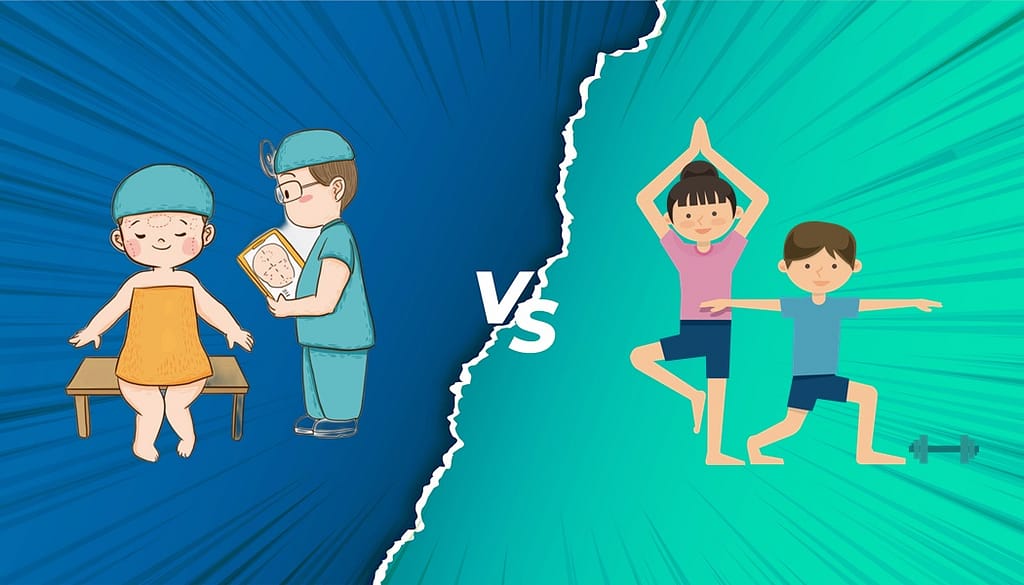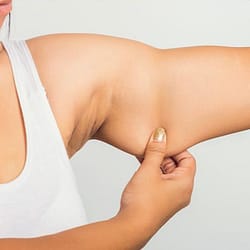
If you’re looking for ways to lose arm fat, you’re not alone. Many people struggle with excess fat on their upper arms and wonder what options are available to achieve leaner and toned arms. In this article, we will explore two popular methods for reducing arm fat: arm liposuction and exercise. We will compare and contrast these approaches to help you make an informed decision about which method is best suited for your needs and preferences. Whether you’re considering surgery or exercise, read on to learn more about how to lose arm fat and achieve your desired results.
Arm fat is a common concern for many people, especially women. It can be challenging to lose arm fat through diet and exercise alone, and some people turn to cosmetic procedures like arm liposuction to get rid of this stubborn fat. In this article, we will compare and contrast arm liposuction with exercise as two ways to reduce arm fat.
Table of Contents
Understanding Arm Fat
Arm fat is primarily subcutaneous fat, which means it accumulates beneath the skin. Visceral fat, which surrounds the internal organs, is associated with various health risks such as heart disease and diabetes. Several factors can contribute to the accumulation of arm fat, including genetics, age, hormonal changes, and lack of physical activity. While arm liposuction and exercise can both help reduce arm fat, they work differently and have different benefits and drawbacks.
Arm Liposuction for Arm Fat Reduction
Arm liposuction is a cosmetic procedure that removes unwanted fat from the arms through tiny incisions and suction cannulas. The surgeon makes small incisions in the upper arms, inserts the cannulas to break down and remove excess fat cells, and then closes the incisions with sutures. This procedure is performed under local or general anesthesia and usually takes 1-2 hours to complete.
Good candidates for arm liposuction are those who are at a stable weight, have firm and elastic skin, and have localized pockets of fat on the upper arms that do not respond to diet and exercise. People with good overall health and realistic expectations about the results are also suitable candidates. Recovery time after arm liposuction is typically a few days, with some swelling and bruising expected. Compression garments may need to be worn for a few weeks to aid in healing.
Arm liposuction is a more invasive and expensive option for reducing arm fat, but it is also a faster way to achieve immediate results. However, there are potential risks and complications associated with the procedure, such as infection, bleeding, nerve damage, asymmetry, or skin irregularities. It is important to choose a qualified plastic surgeon who specializes in arm liposuction and follow their pre-operative and post-operative instructions carefully.

Exercise for Arm Fat Reduction
Exercise is a non-surgical way to reduce arm fat and tone the underlying muscles. Tricep dips, push-ups, bicep curls, and arm circles are some effective exercises that target the arms. These exercises work by burning calories and increasing muscle mass in the arms, leading to a leaner and toned appearance.
Performing these exercises regularly and correctly can help tone the arm muscles and burn calories. Gradually increasing the intensity and variety of the exercises can prevent boredom and ensure continued progress. Regular exercise also has additional benefits, such as improved cardiovascular health, reduced stress levels, and increased energy.
While exercise may take longer to see visible results compared to arm liposuction, it is a safer and more cost-effective way to reduce arm fat. Incorporating regular exercise into a daily routine can lead to long-lasting results and an overall healthier lifestyle.
Comparison of Arm Liposuction vs. Exercise
Both arm liposuction and exercise can be effective ways to reduce arm fat, but they have different benefits, drawbacks, and implications. Arm liposuction is a faster way to achieve immediate results, but it is also more invasive, expensive, and carries some risks. Exercise is a safer and more cost-effective way to reduce arm fat, but it may take longer to see visible results.
Factors such as individual preferences, time constraints, and overall fitness goals can influence the choice between these two methods. Arm liposuction may be a good option for those who want fast and dramatic results or have stubborn pockets of fat that do not respond to exercise or diet. Exercise may be more suitable for those who prefer a non-invasive and natural approach to arm fat reduction or want to improve their overall health.

How to Lose Arm Fat?
Both arm liposuction and exercise are viable options for reducing arm fat. However, they have different benefits, drawbacks, and implications, making it important to choose the option that best suits your individual needs and preferences.
If you’re considering arm liposuction, it is crucial to seek advice from a qualified plastic surgeon and understand the potential risks and complications. Arm liposuction can provide fast and dramatic results, but it comes at a higher cost and with more invasive procedures than exercise.
On the other hand, exercise is a natural and safe way to reduce arm fat and tone muscles, although it may take longer to see visible results. Regular exercise has additional health benefits, such as improving cardiovascular health, reducing stress levels, and increasing energy(9 tips to boost your energy).
To achieve long-lasting results, maintaining a healthy lifestyle with a balanced diet and regular physical activity is essential. A combination of exercise and a healthy diet can help decrease overall body fat and maintain toned arms.
Whether you choose arm liposuction or exercise, it is vital to consult with a qualified professional and understand the benefits and drawbacks of each method. By discussing your goals and expectations with a specialist, you can make an informed decision that will lead to the desired outcome.






